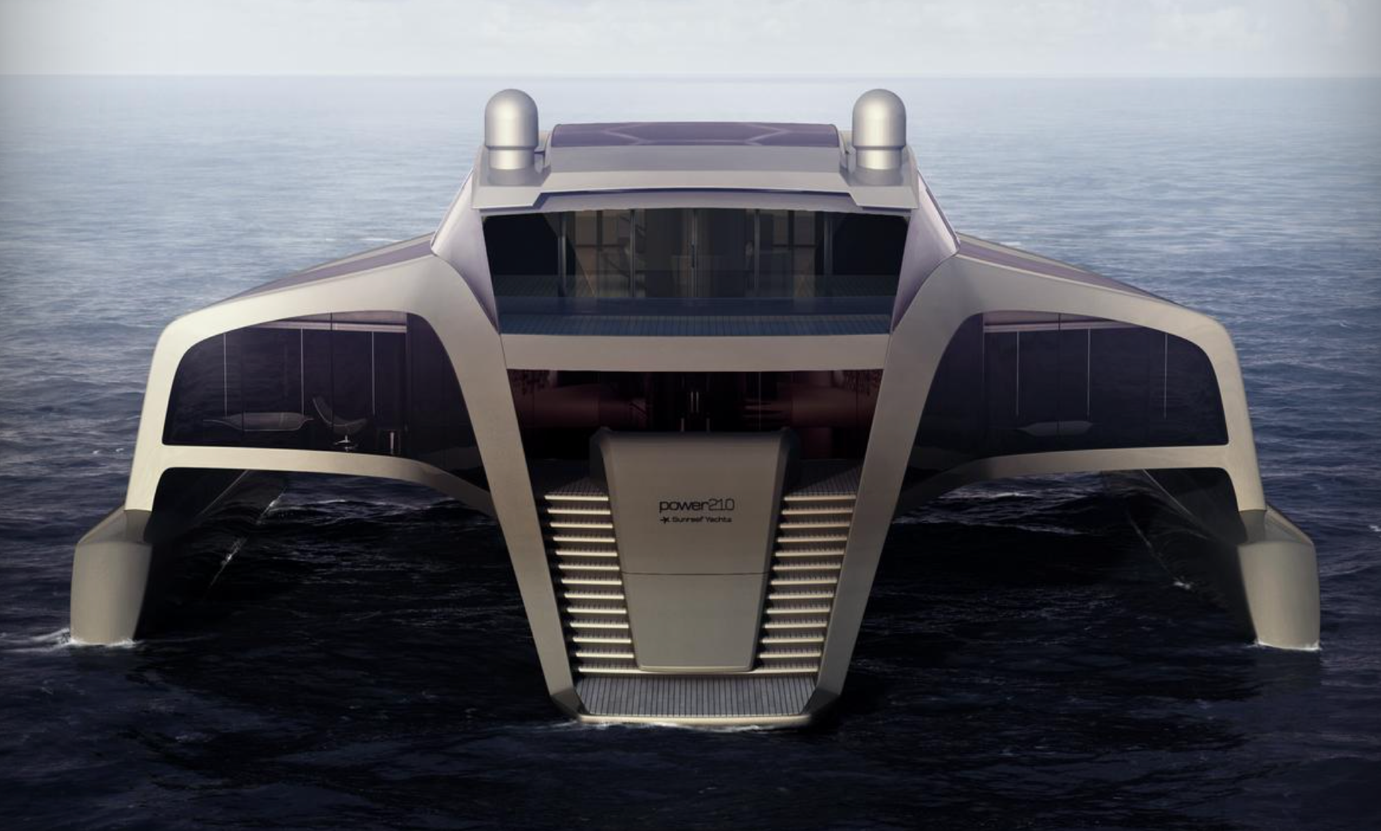
Multihulls
What is a multihull
Definition of multihull
: a vessel with two or more hulls or with multiple side-by-side hulls

Above are illustrations of a typical hull for a motor yacht, sailing yacht with a keel, and a catamaran that features two separate hulls with a centre piece connecting the two hulls. The actual design of a catamaran hasn’t changed for thousands of years.
A little bit of history…….
The origins of the Multihull have been reportedly traced as far back to the 4,000 BC as a means of transport for the great migrations throughout the Pacific and Indian Ocean over thousands of years. Multihulls derived from an Oceania pirogue, more associated by the Polynesians, inherited their seafaring culture from their Austronesian ancestors, who began their migration from Southeast Asia into the Pacific in ocean sailing craft thousands of years ago. Antonio Pigafetta an Italian scholar and explorer described the vessels as flying objects during the World’s first circumnavigation in 1521.

The Polynesians’ used a double canoe made of two hulls connected by crossbeams to provide stability and capacity to carry heavy loads while a central platform laid over the crossbeams provided the needed working, living, and storage space. Sails enabled the canoe to move swiftly through the seas with long steering paddles to help keep it the canoe on course.
The main types ………..
Catamaran (double-hull) A Catamaran is a twin-hulled that can be a sailing yacht, or a motor yacht developed for sport and recreation. The design is originally based on a raft consisting of two logs bridged by planks used throughout Polynesia and Micronesia as seen above by the illustrations by artist Herb Kane.
In 1870 U.S. designer of America’s Cup boats Nathanael Greene Herreshoff designed and built many yachts as well as catamarans and has an amazing back catalogue at his dedicated museum in USA. In 1876 Herreshoff catamaran Amaryllis won the New York Yacht Club’s Centennial Regatta, the win resulted in multihulls sailing vessels being banned at the time from organised competitions, due to its superior performance.
In a letter to the editor of the New York Herald, Herreshoff wrote: “There are two important principles of speed which constantly work against each other. If we increase the power to get more speed, we must increase the stability of the hull correspondingly.
An increased hull has more resistance ….”
“I kept on following this principle, getting the keel higher and higher until, by and by, the keel came out of the water, when, lo and behold! There was the double boat! Nothing else to be done but take a saw and split her in two, spread it apart a little way, and cover all with a deck, and there you are!”

In the 1950s production of the current form of catamaran began which averaged about 12.2 metres (40 feet) in length. Over the next 30 years naval architects across Europe, United States and Australia improved the efficiency and speed to produce very fast catamarans achieving speeds of 32.19 km (20 miles) per hour.
In 1988 the high-performance wing-masted multihull “Stars and Strips” was the first multihull to win the American Cup, today multihulls are the main feature of this prestigious race.
Later the addition of engines made the catamaran a popular motor-cruising boat and are now becoming a growing popular choice for families to charter.
Trimaran (double-outrigger)
Like a catamaran, a trimaran (or double outrigger) originated from the Austronesian culture of Southeast Asia, where it remains a dominant hull design for traditional fishing boats. The design comprises of a main central hull with two smaller outrigger or floats attached by transverse beams.
Victor Tchetchet (1891-1974) inspired by the catamaran design was a pioneering multihull sailboat designer who devised the early trimarans and believed to have invented the term. Ukrainian born and emigrated to America in 1923 further experimented with catamarans and trimarans and in 1945 launched his first trimaran, of 24 ft (7.3 m) length. In 1946 Tchetchet participation in the Marblehead Race Week, helped to reintroduce and started to breakdown the prejudices against multihulls. During his time in the United States, he designed and built many Multihulls with the most notable: T26 (trimaran) – 26 ft (circa 1949) and Egg Nog (trimaran) – 24 ft (circa 1955)
Sailing Trimarans are known for there speed across the water due to how it can displace water over 3 points in comparison to a catamaran 2 points or a monohull one. The design of the trimaran for racing and due to its structure can be more streamlined and hydrodynamic to allow it to basically lift out of the water to increase its speed.
In 2023 the Solo Ultim World Tour is planned, the first single-handed race the world in 100ft foiling trimarans that are capable of sailing at 45 knots.

Entries include the world-famous record-breaking sailors Armel Le Cleach, Charles Caudrelier and Thomas Coville
Trimarans also take on the role as passengers’ vessels, luxury yachts and warships due to the increased speed and stability in the water helping to reduce sea sickness. High speed passenger vessels were devised to cut journey times and the need to provide overnight accommodation especially on popular mainland to island routes.
SWATH (small water area twin hull)
A Swath multihull is a twin hull vessel with slimmer hulls at the water surface to allow it to pierce the water more effectively and the buoyancy hydromantic hull under the water to offer greater stability. The swath hulls are ideal for rougher seas and further limits seasickness, the draft is greater than a catamaran and more power is needed.

What are the benefits
Space
In terms of space the two separate hulls of a catamaran can provide up to double the space than a monohull of the same length. An average monohull yacht of 24 metres will have a bream of 5 – 5.6 metres compared to a multihull of the same length with a beam of 11 – 11.6 metres. The additional space allows for the flexibility of the layout and innovative designs especially in the main saloons. Open plan living spaces can seamlessly flow to the exterior deck’s ideal for entertaining larger groups and families.

Stability and Accessibility
The catamaran and trimaran design acts as a natural stabilizer limiting the side-to-side motion that can cause seasickness.

The difference is even greater when comparing to a sailing yacht that has a keel to support stability. Sailing Catamarans do not have keels so doesn’t have the pendulum affect as seen in the example, the 2-hull structure offers the stability. Multihulls can be more pleasurable to experience especially for families and people who are prone to seasickness. Multihulls have a shallow draft that allows for further exploration and accessibility to beautiful tucked away harbours, coves, and beaches without the use of a tender, unlike monohulls that typically have a deeper draft.
Manoeuvrability
Catamarans are of course wider than a monohull of the same length, so it is important to be able to manoeuvre the yacht within marinas and harbours. Cats have two separate engines, one on each hull to allow the yacht to turn around on the spot. The placement of the engines gives you more control and limits the impact of the tide and wind when navigating through narrow marinas or when underway.

What are the disadvantages
Main disadvantages higher marina costs and availability.
Marina costs and Availability
The advantage of having nearly double the space of a monohull, ultimately means nearly or more double the price for berths in marinas. It can also be difficult to find availability of two berths next to each other in crowded and popular marinas especially in the summer months in the Mediterranean. Pre-planning and pre-booking if possible are essential.
With the advantages and disadvantages considered multihulls can offer an amazing charter experience, so don’t delay and book well in advance. To help with your planning please see a selection of the most luxurious multihulls available for charter.
RELENTLESS II 80
Sunreef Yachts 2022 24.4m / 80ft, 8 Guests 4 Cabins 4 Crew


The newly completed Sunreef 80 Relentless II is available for charter in the Caribbean from 2022. The beautiful and spacious interiors and exteriors are stylish and fresh. Fully equipped with onboard entertainment systems and wide range of water toys. Accommodation consists of a master king suite with a large walk-in shower and 3 spacious queen cabins. The exterior offers Alfresco dining on Aft deck lounge, a Fly-bridge with 360° views, and luxurious sky lounge with a hot tub aboard this fantastic catamaran.
THE BEAST
Custom 2019 39.2m / 129ft 12 Guests 5 Cabins 10 Crew
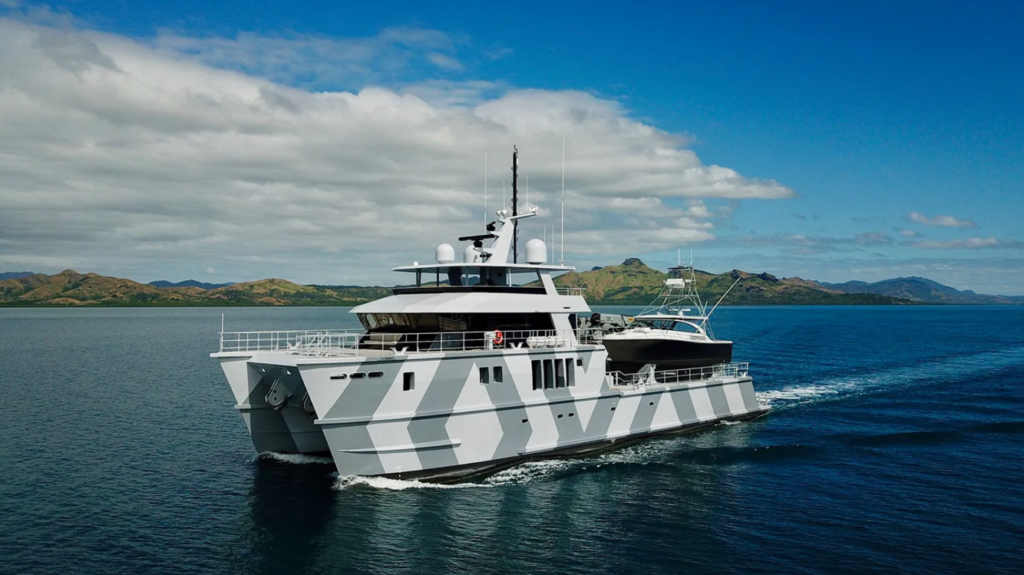

Eye catching painted exterior ‘The Beast’ is very much a family friendly yacht designed for adventure. Set up with a fully functional fishing boat (baby beast) and a wide range of water toys to cater for all age. The award-winning yacht is extremely spacious with a huge 12 metre beam providing 4,000-square-feet of living space. The balance between industrial and luxury is cleverly realised with the chic muted dark interiors that are both subtle and stylish. The exterior includes a sheltered dining space and large sundeck with a bar and a featured teppanyaki grill that makes this catamaran unique.
HEMISPHERE
Pendennis 2011 44.2m / 145ft, 12 Guests 5 Cabins 10 Crew
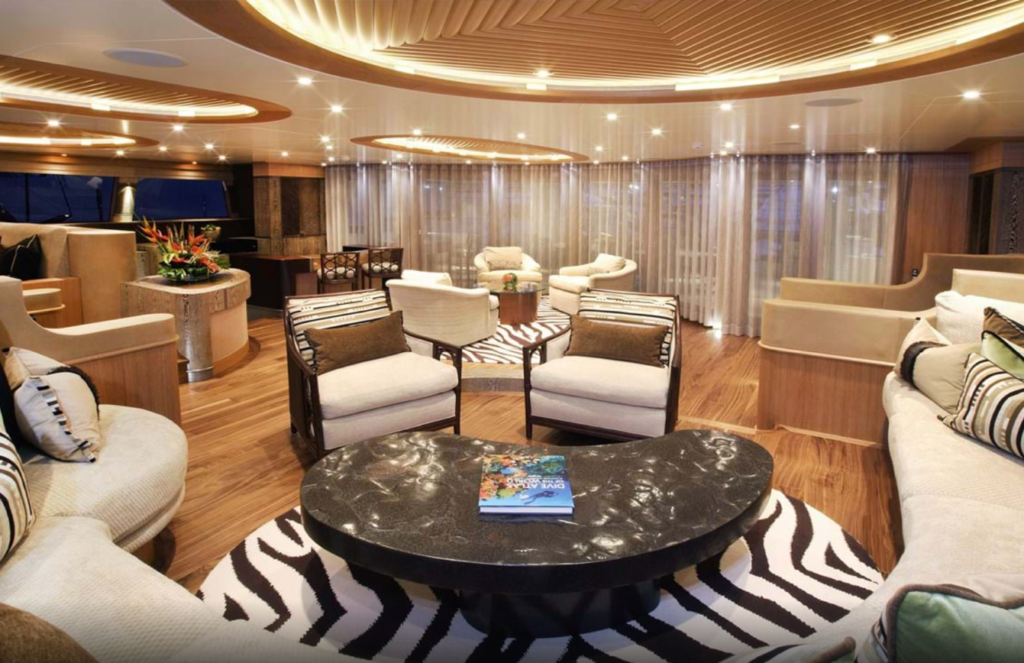

One of the largest luxury catamarans, with exceptional volume offers a high degree of luxury. The elegant interior is contemporary and stylish with a wide range of alternative spaces to relax and lounge in. Award winning for interior design and layout has two VIP cabins on the main deck each have access to a terrace lounge forward, two double cabins and one twin cabin. The Water sports facilities on board are unique with the starboard lazarette holds the usual superyacht toys and the port hull contains a dive centre with a full range of equipment capable of both Air and NITROX tank fills.
The Future
Multihulls are a popular choice and developments of concepts of fully sustainable multihulls are the future, below are some examples
BONDGIRL
Hannah Sahra – concept design
M/Y BOnd Girl is a futuristic and stealth like 70m trimaran concept with exterior by George Lucien and interior by Hannah Hombergen.
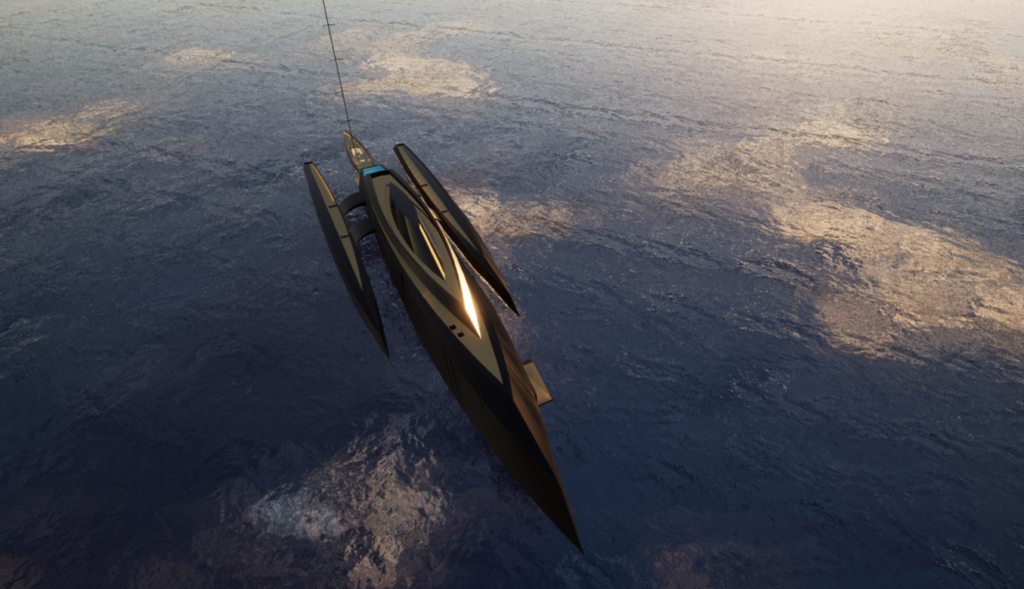

210 Sunreef Power Trimaran
An ambitious 210ft three-hulled concept, it fully utilizes the space within and between the hulls to reach a living area of nearly 1000m².
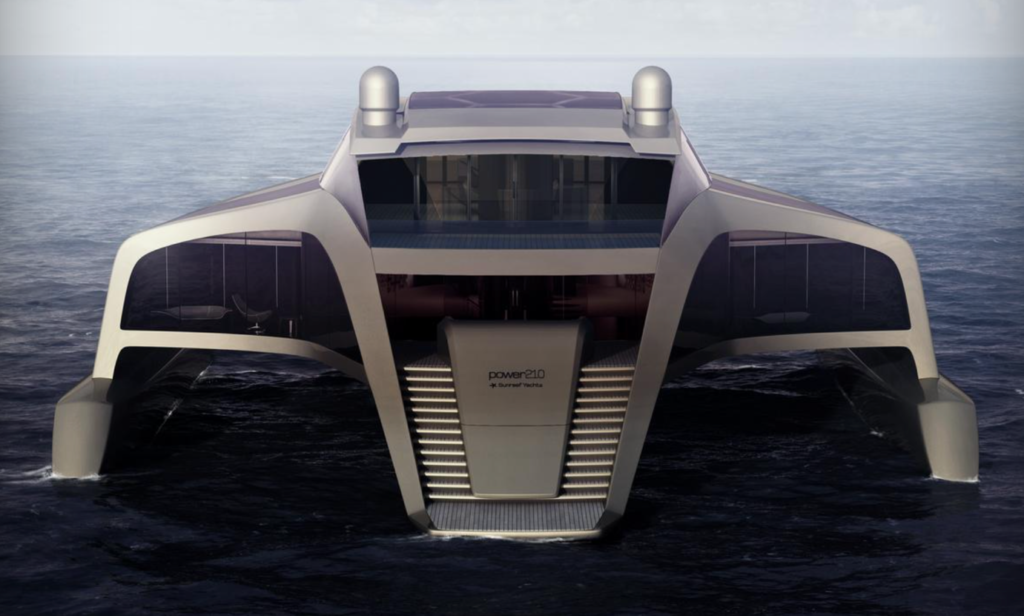

References
Britannica: https://www.britannica.com/technology/catamaran
Transpacific project: http://www.transpacificproject.com/index.php/ocean-sailing-craft/
The Philippine Diary Project: https://philippinediaryproject.com/about-the-philippine-diary-project/about-the-diaries/about-antonio-pigafetta/
Herb Kane Illustrator: https://www.herbkanehawaii.com/
Cruising World: https://www.cruisingworld.com/how/how-dock-catamaran/
New York Yacht Club: https://nyyc.org/home
Cup Experience: https://cupexperience.com/amaryllis/
Craft sail blog: https://sailcraftblog.wordpress.com/2016/05/16/the-real-story-of-amaryllis-and-the-first-racing-catamarans/
Sail-World: https://www.sail-world.com/news/239323/Solo-Ultim-World-Tour-confirmed-for-2023
Gitana: http://www.gitana-team.com/en/
Austal: https://www.austal.com/ships/benchijigua-express
Sunreef Kokomo Catamaran: https://www.sunreef-yachts.com/en/news/80-sunreef-power-kokomo-a-private-beach
Pendennis: https://pendennis.com/yachts/hemisphere/
Lomocean: http://www.lomocean.com/projects/pleasure/39m+-+the+beast
Hannah Sahra: https://sites.google.com/hannahsahra.com/hannah-sahra/interior-design/my-bondgirl
Breed Photography: https://www.breedmedia.com/collection

